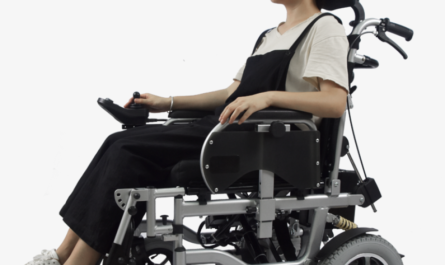
Introduction
Modern healthcare relies heavily on automation and technology to improve efficiency, quality and reduce costs. One area that has greatly benefited from automation is pharmacy operations, through what is termed as pharmacy automation. Over the past few decades, pharmacies have increasingly adopted various automated systems and machinery for key functions like dispensing, packaging, labeling and inventory management of medications. This article discusses the evolution of pharmacy automation and how it is revolutionizing medication management.
Dispensing Automation
Dispensing medications is one of the core functions of pharmacies. Traditionally, pharmacists and technicians would manually count, pour and package medications based on prescriptions. This was a labor intensive and error prone process. Automated dispensing systems now take care of this function. Robotic systems precisely count and dispense medications in unit doses or multi-dose packages based on electronic prescriptions. This improves accuracy and allows multi-tasking by pharmacists. Early systems could only handle a limited number of solid oral dosage forms. Advanced systems today can dispense a wide range of medications including liquids, creams, inhalers and injectables. Automated cart filling systems further streamline the process by systematically filling medication carts/trolleys. All these systems significantly enhance productivity while reducing errors in the dispensing process.
Automated Packaging and Labeling
Once medications are dispensed, they need to be accurately packaged and labeled for patient delivery. Automated packaging and labeling systems take dispensed medications and seal them in plastic pouches, vials or bubble packs along with patient specific labels containing dosing instructions. This mechanized process avoids mistakes caused by manual labeling. Smart labels with barcodes allow for serialization and integration with inventory management. Automated systems combined with robotics can package thousands of doses accurately within a short timespan. This improves turnaround times and allow pharmacies to meet rising demand. Some advanced solutions offer multi-lingual and Braille labeling capabilities.
Inventory Management
Automation covers more than just the dispensing process. Sophisticated automated systems now centrally manage inventory across multiple pharmacy locations. Powerful software tracks in-stock and out-of-stock medications in real-time across all facilities linked over a network. Replenishment orders are automatically generated based on usage data. Robot managed carousels precisely retrieve and restock medications in their designated locations. This centralized inventory management streamlines logistics, prevents stock-outs and ensures optimal inventory levels are maintained across all sites to deliver consistent high quality patient care. Asset tracking also allows for first expired/first out management to avoid expiration of costly medications.
Improving Workflow Efficiencies
Pharmacy workflow involves many steps beyond just dispensing like order entry, verification, counseling and delivery. Automation facilitates integration across these varied steps for a seamless process. For example, automated medication dispensing systems are directly linked to electronic health records and prescription orders. Verification of medications is done at the point of dispensing to catch any errors. Patient counseling stations pull up detailed medication lists and schedules. Automated sorting and delivery systems like robotic mailrooms route filled prescriptions efficiently for carrier pick-up. Emerging solutions even offer drive-through pickup and home delivery options. All these integrated automated solutions maximize productivity by streamlining workflow bottlenecks and optimizing the medication use process end-to-end.
Data Analytics and Reporting
Massive volumes of operational data are generated through pharmacy automation systems on dispensed medications, inventories, labor tasks and performance metrics. Harnessing these data insights enables strategic decision making. Analytics dashboards provide real-time visibility into key performance indicators like productivity, error rates and turnaround times across multiple facilities on a single interface. Predictive algorithms can forecast medication demand trends and procurement needs. Automated reporting templates prepare regulatory reports with a click of a button. Data driven decision making powers continuous improvements in quality, safety and cost saving initiatives. Advanced systems also offer safety alerts based on medication interactions and adherence monitoring to optimize therapy outcomes.
Conclusion
Pharmacy automation has revolutionized medication dispensing and management over the past few decades. Integrated automated solutions spanning dispensing, packaging, inventory control and workflow optimization have boosted productivity and quality of care across healthcare settings. This translated to marked efficiencies, cost reductions and optimized patient outcomes. Automation is emerging as an invaluable tool empowering pharmacists to operate at top of their license and re-focus on direct patient care functions. As technology innovations continue, automation is set to transform medication management on an even larger scale in the future through avenues like decentralized pharmacy models, point-of-care systems and emerging therapeutic platforms like 3D bioprinting of drugs. Overall, pharmacy automation is a driving force modernizing pharmacies to deliver sustainable, accessible and high-quality pharmaceutical care.
*Note:
1. Source: Coherent Market Insights, Public sources, Desk research
2. We have leveraged AI tools to mine information and compile it



